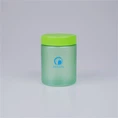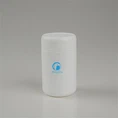When we think of plastic bottles, most people focus on the bottle and cap design. But hidden inside the cap is a small, critical component: the gasket (also called a liner or seal). This thin layer may seem minor, but it plays a vital role in ensuring product safety, freshness, and usability.
1. Preventing Leaks
The primary function of a gasket in plastic bottles is to create a tight seal between the cap and the bottle neck. Without this layer, even a well-designed screw cap may leave micro-gaps that allow liquids or powders to escape. During transportation, vibration and movement can worsen the risk of leaks. A properly fitted gasket helps ensure the product remains intact from factory to consumer.
2. Extending Shelf Life
Different gasket materials provide varying levels of protection against oxygen, moisture, or aroma transfer. For food, supplements, or cosmetics, this barrier effect helps prevent spoilage, oxidation, or flavor loss. In other words, the gasket helps maintain product quality over its intended shelf life.
3. Ensuring Tamper Evidence
In industries like food, pharmaceuticals, and health supplements, tamper evidence is essential. Induction foil seals, for example, adhere directly to the bottle mouth and cannot be removed without visible damage. This gives consumers confidence that the product has not been opened before purchase.
4. Compensating for Manufacturing Tolerances
No bottleneck is perfectly flat. Small imperfections in molding or injection processes can create uneven surfaces. Soft foam or pressure-sensitive gaskets fill in these irregularities, ensuring the seal is still effective despite minor variations.
5. Supporting Consumer Experience
A gasket also affects how a bottle is opened and re-closed. A good liner allows consistent torque when tightening or loosening the cap and provides a reseal function after the first opening. This makes the product more user-friendly while still preventing spills.
So next time you open a plastic bottle-whether it's for vitamins, cosmetics, or a household product-remember that the thin liner inside the cap is doing far more than meets the eye.
















